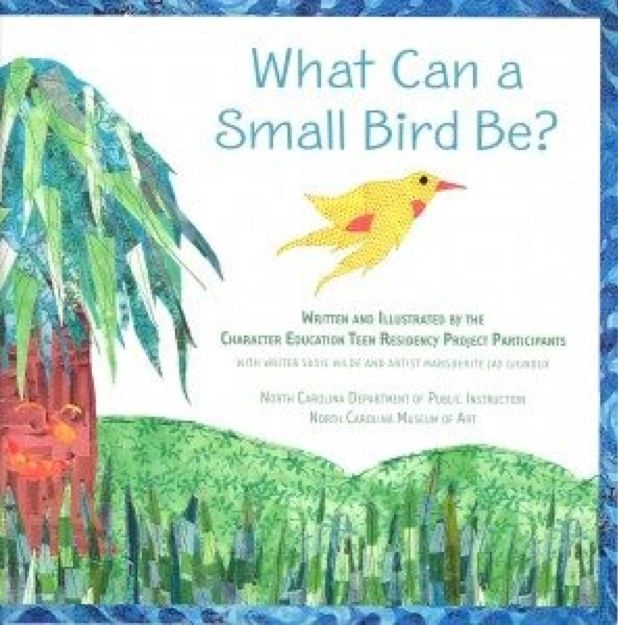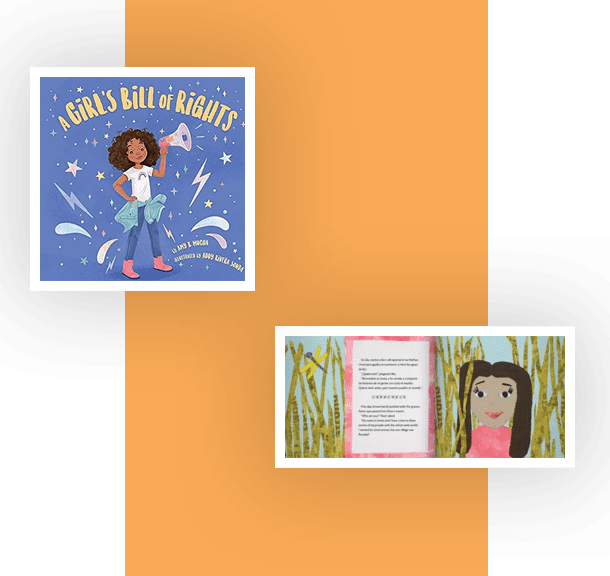
The Journey from Idea to Publication: How to Birth a Book
Where Do Children’s Books Come From?
Children’s books don’t grow under cabbage and aren’t delivered by storks. They are conceived with passion, imagining, and whimsy. They are born from life stories, odd connections, momentary musing, and a desire to communicate ideas, laughter, and, sometimes, tears. They develop from the hard work of editing and re-editing, murdering your darlings, deepening your themes, and discovering new layers. They come into being from the desire to make what is in one’s mind and heart tangible so that gift can be shared with others.
Where did my desire to midwife children’s books come from?
My experience with writing and children’s books has breadth and depth.
I began with years of my own writing—composing three YA novels, one middle grade, and a dozen picture books. I took them through countless drafts, won awards, participated in workshops with experts like Jane Yolen, and garnered lots of great rejections.
I continued with decades of reviewing children’s books-reading them aloud to children and adults, judging the rhythms, admiring plots, and being wowed by words.
For more than ten years, I have been teaching and watching books and writers change, grow, and their books come into being. I have cried with the power of their words and sometimes with frustration at the decisions of the marketplace.
For years, I’ve also taught on paper by editing manuscripts. There is no better way to learn than by focusing on your own work, getting an up-close read, and seeing it improve with each rewriting.
I’ve helped at least fifty writers edit their books and have aided a dozen authors in self-publication. Along the way, I have discovered resources (including book designers, line and copy editors, art direction, and illustrators) that I can recommend.
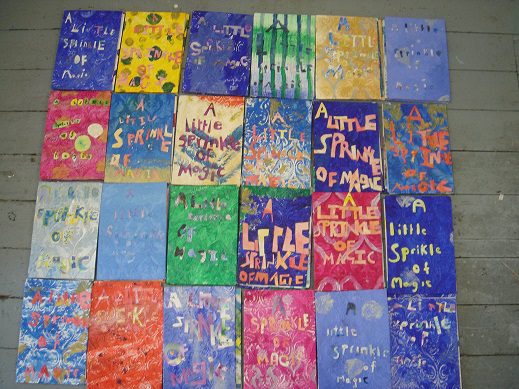

I’ve written a book, now what? How do books get born?
I began writing in the days when there was only one clear way into the children’s book field. You wrote an excellent story, edited it many times, shared it with a critique group (if you were lucky enough to have one), and, many revisions later, sent it to an editor. If s/he/they loved it, they would buy it.
Today’s children’s books are a curious combination of hard-to-breach traditional channels and many new creative paths to publication. In traditional publishing, if you don’t have an agent, you’re in trouble because fewer and fewer publishers accept unsolicited manuscripts. Today’s agents are the gatekeepers. Very often, the sales departments of publishing companies often have the say-so over buying work. So, like most of the world, the bottom dollar can matter more than artistry. Years ago, I fell in love with the concept and title of Olga Litowinsky’s. It’s a bunny-eat-bunny world (Walker, 2001). That title pretty much sums it up.
On the upside, the market has changed in some good ways. There are many small publishers that still accept manuscripts, there are alternate ways to reach editors and agents, and children’s book publishing is an evolving field. I realized, of late, that in the past several years, I have aided and joyfully watched several different books follow various paths to publication. My hope is that a survey of the stories behind these books might enlighten, give hope, and inspiration to writers who seek to publish.
It’s not impossible to breach the high walls of traditional publishing.
See Lucy, Adrea and Amy’s stories below.
Conferences can provide a conduit
In 2014, I told my student, Lucy Margaret Rozier, “Your powerful voice needs to be out there. Come back from the SCBWI (Society of Children’s Book Writers) conference with a contract!
At the conference, she added her work to the pile of manuscripts in the First Pages challenge, wherein students submit the first pages of their manuscripts anonymously for a panel of experts to review. After the reader narrated a series of angsty-dark YA entries, he performed Lucy’s rollicking, rhythmic tall tale explaining the power of the telegraph. The crowd (and an agent) were wowed by her strong voice and the long-legged hero who dared to race electricity. Lucy came home with an agent who sold her book to Schwartz & Wade a month later, and in 2015, she published Jackrabbit McCabe and the Electric Telegraph.
When my student, Adrea Theodore, read her manuscript, A History of Me, to our critique group, there wasn’t a dry eye! It wasn’t the first time in six years that Adrea had wowed us with amazing rhythms, word choices, and clever constructs. We were elated to learn she’d soon read her story at the SCBWI (Society of Children’s Book Writers and Illustrators) New York City Conference.
The seminar in which she read was led by an agent, who signed her and sold her book within a short time. But the course of publishing doesn’t always run smoothly—her agent switched houses, and so did her publisher. Her remarkable illustrator, Erin K. Robinson, was flooded with work. It took years of waiting. Thankfully, Adrea is the calmest, most patient person I know. A History of Me debut in January 2022! It’s based on Adrea’s memories of being “the only brown person in class” and her daughter having a similar experience. A wonderful way of retelling personal history in the larger context of eras past, present, and future.

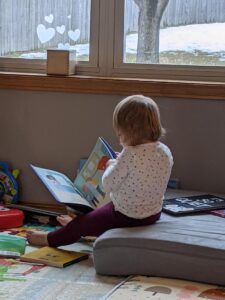
Susie’s granddaughter, age 2, reading “The Girl’s Bill of Rights.”
Twitter Connection makes traditional publishing possible
Amy Mucha had been writing with me for over a decade in critique classes when she courageously entered the Twitterverse. Her presence increased through thoughtful posts, and she took up multiple Twitter challenges and opportunities offered to writers. First, she connected with an agent and then a publisher! I think of Amy primarily as a novelist, but over the years, she’s written dozens of witty, intriguing picture books. She pitched a bunch of them in a Twitter Pitch War, and Beaming Books chose to publish The Girl’s Book of Rights. (Beaming Books, February 2021) Insightful, positive, and powerful, The Girl’s Bill of Rights choruses “I have the right” to “be bold, and mighty, and LOUD!” or “to like what I like and love what I love.” The book uses simple words and cheerful illustrations by Addy Rivera Sonda to represent big empowerment in terms of autonomy about feelings, thoughts, body, race, gender nonconformity, consent, and more.
Self-publishing Journeys
Many writers and illustrators consider self-publication. It used to be that printing costs and distribution were negative deterrents. The question I used to ask those considering self-publishing was: “Do you want to give up your garage space to store all the children’s books you might have a hard time selling?”
Now, given the possibility of printing on-demand, printing costs and storage issues have been mitigated. But I see a quandary in self-publishing. Because anyone can publish a children’s book, self-published children’s have a reputation for being of poor quality, especially if one relies on the illustrative expertise of print-on-demand services. The question I put to those considering self-publishing now is: “Just because you can publish a children’s book, should you?”
When I began seeing the power of the self-publication trend, the way it would allow writers and illustrators to control their publishing, I set a new objective for myself. I wanted to help writers raise the bar on self-publishing. I believe that every author who self-publishes must seek out the benefits traditional publishers offer. They should have:
Creating a team to support you
Missy Julian Fox took one of my first classes when I started teaching at the Carrboro Arts Center. She shared what I came to think of as the book of her heart. It reflected conquering many of her personal demons. Her lyrical writing was evident, as was how this children’s book offered an artistic resolution of her happily-ever-after life situation. She published Violet Stands Tall in 2021.
By then, she had learned what it took to self-publish. She first published two books, Goodnight Carolina and Road Trip Carolina: A Ride Across the Old North State. She had the wisdom to put together a team to support her efforts. Missy hired me as an outside editor and collaborated with fabric artist Elaine O’Neal, who shared her passion for all things Carolina. She found a book designer who oversaw publishing. Both books are great examples of success that can happen when you write a niche book that fills a passion that others share.


Goodnight Carolina
There are so many books modeled on Margaret Wise Brown’s Goodnight Moon. Most just list significant sites known in a city. Missy and I worked hard to replicate the structure and rhythms of Margaret Wise Brown’s famous original in Goodnight Carolina. Goodnight Carolina sold out to Carolina fans and had to be reprinted.
Road Trip Carolina
When it came to creating Road Trip Carolina, Missy’s elegant lyricism had freer rein and allowed her to show her passion for all places in North Carolina. That didn’t mean we didn’t have to work diligently on meters and rhymes! Again, Elaine O’Neal joined forces with images to represent North Carolina sites. Road Trip also did well.
Not only a master of rhythm and rhyme, but Missy also proved a genius at putting together a team to support her books!
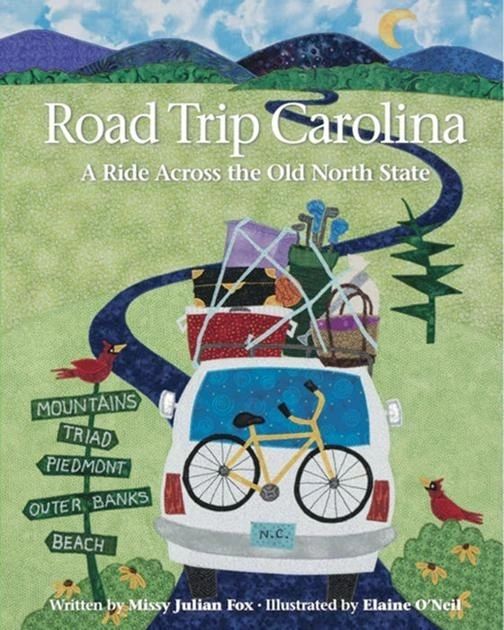
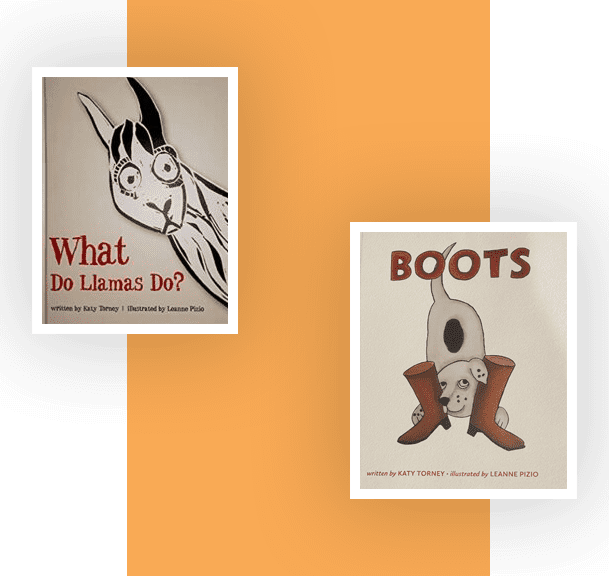
Turning life experience into art
2016, Katy Torney came to me with an idea for a book. It involved a hysterical real-life event that occurred when her headstrong llama, Inca, ran into a large boulevard in Greensboro, NC, and held up 8 lanes of traffic. She came to me with an illustrator she’d chosen. Like Katy, I fell in love with the amazing art of Leanne Pizio (not to mention Leanne herself). I introduced them to book designer Steve Godwin and together, the four of us synchronized words, images, and the delight of creating. What do Llamas Do? was self-published in January 2017. Self-publishing can be an expensive prospect, but Katy and Leanne developed merch and sold enough books that Katy earned her money back in a year.
Within weeks of the book’s publication, Katy’s son, Garret Torney, was killed in an accident that dimmed the celebratory feelings we all had. Several years later, we came up with a concept to honor her son, who had severe PTSD after serving in Iraq. Katy formed a foundation and began to support Saving Grace, an organization that pairs veterans with dogs who need homes. Boots, published in 2021, again illustrated by Leanne Pizzio, honors Saving Grace, Garret, and the many veterans and their families who are dealing with PTSD. Boots is written from a dog’s viewpoint—Ella wonders why her human is so different when he returns from war. Katy is now seeking funding that will enable her to get Boots to veterans and their families who need it. The book has done much to heal Katy’s spirit and those with whom she shares it. Click here to purchase your own copy of Boots, by Katy Torney
Passion and Partnership
Michael Neece attended a “Good Book, Bad Book” presentation I gave and got centered on what it takes to publish a children’s book and the many pitfalls. He signed up for my class with an idea in mind and a desire to publish a book about the stellar planetarium personage, Tony Jenzano. During that workshop, he learned much about structure and hired me later to work in more detail because he’d found a publisher.
As an employee at the Morehead Planetarium in Chapel Hill, NC, where Tony Jenzano had once trained astronauts, Michael had a special connection with his subject. The Planetarium had a connection with J. Murrey Atkins Library at UNC Charlotte which published Tony Jenzano, Astronaut Trainer: The Man Who Made The Stars Shine in 2021. Michael found a Raleigh illustrator through SCBWI (Society of Children’s Book Writers) who totally got what the book was about, and his work serves as a wonderful complement to Michael’s words.
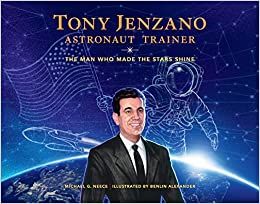
Book Belief and Hybrid Publishing
When Allison Ione Ballenger entered my class and spoke about writing in verse, I was quick to downplay the use of writing in rhyme. Traditional publishing discourages the use of rhyme more than any other format for a good reason. In my experience, writers often sacrifice sound to make sense or sense to make meter work.
I was so discouraging that poor Allison was a bit afraid to share her manuscript, but when she built up the courage to read it, the whole class was stunned by her mastery. Her rhyming is perfect in the story of an older sibling who knows the magic of the world and tells his sister of her enchanted future to come. He tells her of fairies, dwarfs, and wizards that will arrive on her birthday… except they don’t. There is magic in the story itself, its rhythms, and in Allison’s road to publication. Allison took a classic issue (sibling rivalry), added her unique combination of humor and whimsy, and expressed these with an original voice in perfect rhymes. She believed in her book, and so did Warren Publishing, a company that uses a hybrid approach in which both the author and the publisher make a financial investment in the book. In addition to aiding her in marketing, Warren Publishing found her a magnificent illustrator, Carlos Velez Aguilara, and her book, One More Year, was published in 2020.

Partnership and Collaboration Creates Books
For years, I wrote my own children’s books, but I have much more fun creating collaborative books with groups. I began teaching writing residencies when I moved to North Carolina in 1990 and quickly evolved a collaborative process that linked reading and writing activities and took all of us on an imaginative journey from imagining characters to editing a final draft.
In 2004, I began Story Quilt collaborations with textile designer Peg Gignoux. I guided groups in creating a story, and then, in a parallel process, Peg led participants in developing visual images to illustrate the allegorical tale. In 2011, with the help of Julia Gignoux, book designer, we turned our Tell Me a Patch Story Quilt into a book.
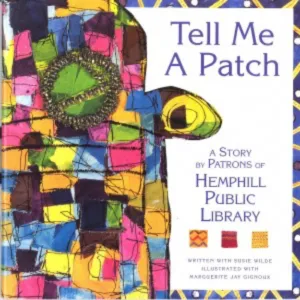
Tell Me a Patch - reveals the raucous nature of a library and a timid little pillow who is comforted by a storytelling chair. Patrons of all ages of the Hemphill Library in Greensboro, NC, collaboratively wrote the story with me and illustrated the tale with Peg Gignoux. Julia Gignoux did the book design.
That first collaboration led to more (see examples below) and even the founding of For Kids By Kids, a team of artists who collaborated with non-profits working for positive social change to transform their principles into vibrant words and illustrations.
In 2019, El Regalo de Lenna/Lenna’s Gift was produced through a collaboration between this talented team of creatives and Mariposas, a Latinx organization dedicated to aiding teens in owning their power. I aided 40 students from ages 8-18 in a writing process. Illustrator Peg Gignoux guided their creation of illustrations. Book designer Steve Godwin married text and images.
The story tells of River, who wants to be big and strong and boasts of its power when flooding. River’s friend Moon who sees the whole world provides a bigger view. “Big and strong aren’t always best. The spiders’ webs are torn, and the grasses lie bent and broken by your waters.” River finds true strength by helping Lenna, a determined young woman with a vibrant idea for uniting the world.
El Regalo de Lenna/Lenna’s Gift is a bilingual children’s book that addresses the themes of transformation and liberation. The book was funded by various organizations through the grant-writing prowess of Andrea Carson Tanner and the generosity of individual donors, largely through a Kickstarter Campaign.
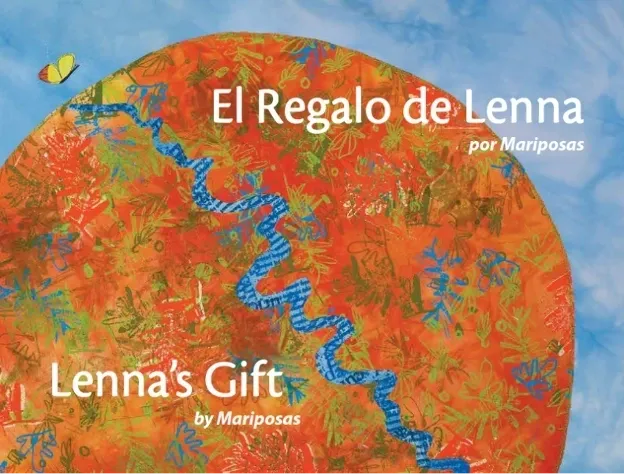
More Partner Projects
Planting Hope, a book FOR kids BY kids – A hard-working girl and a golden seed unite a contentious garden. This 2016 book was commissioned by PORCH in Chapel Hill and produced in collaboration with an ELS class at Smith Middle School and after-school students at Rogers Road Community Center, both located in Chapel Hill. I guided writing, Peg Gignoux led illustration workshops, and Steve Godwin did the book design.
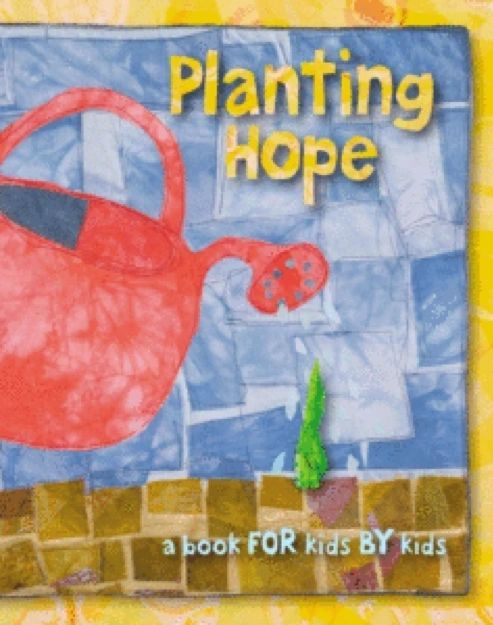
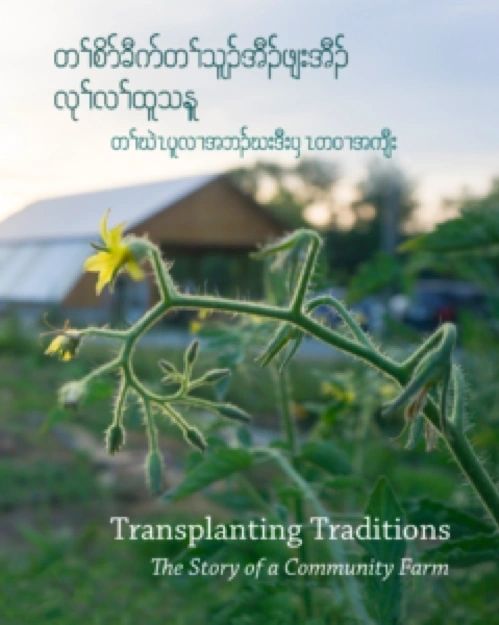
Transplanting Traditions The Story of a Community Farm
Transplanting Traditions - The Karen Youth Art Group, sponsored by the FRANK Gallery, wrote, illustrated, and photographed this picture book in Karen and English. The 2015 publication documents a community that finds a home in the United States when a Chapel Hill location enables their gardening tradition to take root. Denis Szerszen mentored the children in photography, Nerys Levy and Fran Hamer led them in art exploration, and Steve Godwin did the book design.
What Can A Small Bird Be?
What Can A Small Bird Be?- A tiny bird’s life gets bigger when he discovers important virtues like courage and perseverance. A partnership between the North Carolina Department of Instruction and the North Carolina Museum of Art, this book was written by eight teams of teenagers across the state of North Carolina in 2011.
